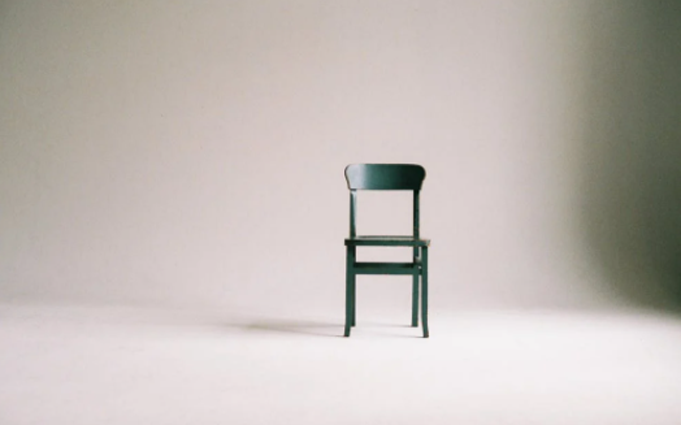|
|
One of the beautiful aspects of Mindfulness Meditation is that it can be done anywhere whenever you have a few uninterrupted minutes. The White Room Meditation is a five-minute exercise of watching your thoughts come and go. A simple practice of observing your mind at work.
The Room
Imagine you are inside a pure white room. It can be any size of your choosing, large or small. There are two doors, one at each end of the room. Other than these two doors, there is nothing else. No furniture, no decorations, no windows, only two doors that are open. Beyond the open doors there is nothing but blackness.
Thoughts: Enter Stage Right
You can position yourself anywhere inside the room: at the corners, on the floor in the center, even on the ceiling. Anywhere you wish. Inside the room is silence and peace. Your thoughts enter the room from the door on your right, flow through the room past you and exit through the door on your left. As a thought floats past you, you may attach any image you like to it. It doesn’t matter what. You might add a bird, or a shaggy dog, a new car, or a huge gorilla – or nothing at all. Or you can merely add the word “thought.” Say or think the image or the word “thought” to yourself as it floats by you and out the door on your left. Don’t analyze or explore. There is no need. It’s just a thought. Take long, slow, deep breaths.
Endless Stream
Throughout your waking hours you experience an endless stream of thoughts that you automatically add images to. Did you mail that car payment this morning? Why do you have a hang-nail on your left thumb? You have a tiny grain inside your eyelid that annoys you. It’s your mother’s birthday next week. That girl is wearing a stupid shirt. On and on. An endless procession of meaingless thoughts. If you attached a new number to each, there would be thousands or more.
Meanwhile…
Back in the white room, some thoughts have an urgency about them. Some drift about and seem not to want to leave. But don’t acknowledge any new thought until the current one exits through the left door. Some thoughts will repeat the process and float by you more than once. Most will appear only the one time. Just observe them and let them go.
Judging or Non-Judging
This exercise is meant to merely observe our thoughts without judging. But you may label them as either judging or non-judging. It’s just a label. Don’t let any thought hook on to you. It will make you want to analyze it. Don’t allow it. Dont argue with it. Just let it go and it will float away right out the door. You will know when you are experiencing a troublesome thought if it won’t leave and you begin to feel emotions bubble up inside. Make sure you let it float away. There are other thoughts waiting to enter.
Who’s In Control?
Remember, you are the one who created the white room with two doors. You made your thoughts transition through both doors and disappear. Yet you are still here. You allowed your thoughts to have a brief life and an identity which you gave them. You allowed them to leave at their own pace, without you being required to do anything other than observe.
Time to Analyze
Your five minutes are just about up. When you’re ready blink the white room away, out of your consciousness. Take a deep breath and exhale. Then take a few moments to reflect. Ask yourself: Did your thoughts speed up or slow down as they passed by, or did they all float by at about the same speed? How easy or difficult was it to see them go out the exit door? Did a new thought appear as if on cue, or did you have to wait for it? Did any thoughts make you feel any emotion, or upset you at all? Or were they all similar? Finally, how do you feel after these five minutes – relaxed and calm? Tense and stressed? Or about the same as when you began?
Easily Re-Focus
For many people, the white room meditation is very calming. Observing your thoughts for what they are slows them down and makes them feel less urgent. Your duties and responsibilities haven’t changed. You are the same person as before. The only difference is you now fully understand what thoughts are and how to re-focus when they want to intrude – by just letting them go.
The more you practice mindfulness the more skill you will gain and the more benefit you will receive. Since the ultimate goal of mindfulness is to be fully aware during your entire life, you can never truly master mindfulness. The chief benefit comes from being able to refocus your mind to the here and now after your attention has wandered. This benefit with travel with you for the rest of your life.
This report is not a diagnosis. We hope this information can guide you toward improving your life.
Review our Knowledge Base or the links displayed on this page for similar and related topics.

